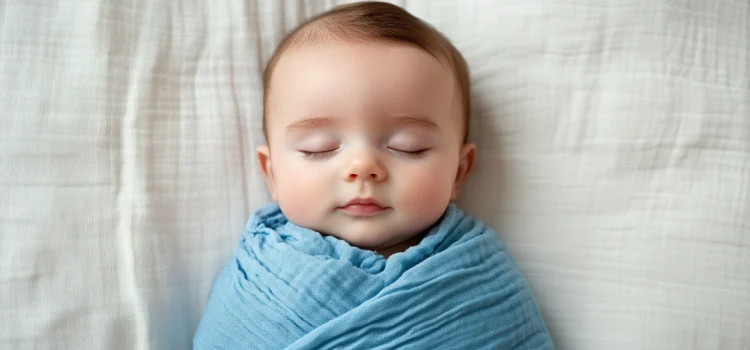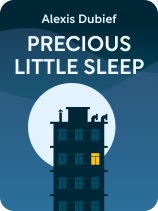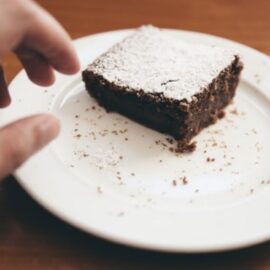

This article is an excerpt from the Shortform book guide to "Precious Little Sleep" by Alexis Dubief. Shortform has the world's best summaries and analyses of books you should be reading.
Like this article? Sign up for a free trial here.
What are positive sleep associations? How can you use these types of associations to help your baby form good sleep habits?
Newborn babies have unpredictable sleep patterns, so naturally, you’ll want to create a routine and calm them down. However, you still need to teach your baby how to sleep on their own without your help.
Here’s how you can encourage independent sleeping with positive sleep associations.
Forming Helpful Sleep Associations
Alexis Dubief notes that while your baby is a newborn, they’ll have unpredictable, chaotic sleep patterns and may need a lot of soothing to help them sleep. During this period, you should use every appropriate and safe technique to aid them, including rocking, bouncing, holding, massaging, and feeding.
However, Dubief says you’ll soon have to teach your newborn to sleep without your help, and to do that, you must help them form positive sleep associations—people, objects, locations, environmental conditions, or activities your baby needs to fall and stay asleep. She explains that there are two kinds of sleep associations: unsustainable and sustainable.
Unstainable associations are ones that require effort and involvement from you and that stop or disappear after your baby falls asleep—like cuddling, nursing, or bouncing your baby to sleep. When such a sleep association stops or disappears, your baby will notice, and they won’t be able to get back to sleep after one of their nightly sleep arousals.
Sustainable sleep associations are ones that remain constant from bedtime until morning and require little involvement from you—like white noise that stays on all night.
One way to help your baby learn independent sleep is to give your baby as many sustainable sleep associations as possible from the start. We’ll call these sustainable associations sleep aids. Sleep aids provide gentle assistance, and they’re relatively easy to wean from when the appropriate time comes. The ideal sleep aids are sustainable because they’re soothing, function autonomously throughout the entire sleep cycle, and do not directly involve your presence—comforting your baby while they practice falling asleep independently. The author recommends using white noise, swaddling, and pacifiers.
Sleep Aid #1: White Noise
White noise is an easy, inexpensive sleep aid that works well for most babies. White noise reduces stress by eliminating overwhelming environmental stimulation and mimicking the womb’s comforting sounds. Just make sure it’s louder than your baby’s crying so they can hear it. You can easily wean the child off white noise if and when you want to—just progressively reduce the volume of the noise for a few nights until it’s off completely.
Sleep Aid #2: Swaddling
Swaddling is one of the oldest sleep aids, and it can soothe babies to sleep from birth to around 4 months old. The author explains that by restricting startling arm movements, swaddling can reduce your baby’s night wakings and crying by up to 28%. Proper swaddling keeps the baby’s arms contained but not too tightly wrapped—you should be able to fit two fingers between the blanket and their chest. Focus just on wrapping the upper body to avoid hip issues from lower body swaddling. Don’t stress if your baby fusses initially, as the soothing benefits of swaddling usually outweigh any passing annoyance your baby might experience from the swaddling process itself.
Dubief notes that swaddling is only safe when your baby stays on their back. Swaddled babies who are put down on their bellies or roll over onto their bellies are at much higher risk of SIDS. Stop swaddling immediately if your baby shows signs of rolling over on their own, which Dubief says happens around 2 months of age on average. All babies eventually outgrow swaddling. However, the author recommends you continue swaddling until your baby can fall asleep independently, as it provides excellent support during that training process. To wean the baby off swaddling, first try it with one arm out, allowing your baby to get used to more mobility.
Sleep Aid #3: Pacifiers
According to Dubief, pacifiers can be very soothing for some babies, and they reduce the risk of SIDS during sleep. If your baby doesn’t readily take to a pacifier, experiment with different pacifier types, offer them when they’re not hungry, and use the “wiggle method” of gently tugging it once it’s in their mouth.
Some babies only need a pacifier to fall asleep initially. Others need it to stay in all night to sleep, and this sleep association is unsustainable because it requires you to reinsert the pacifier every time it pops out. If this is the case for your baby, the author recommends you wean them off the pacifier as soon as possible and use other sleep aids instead. Otherwise, she says the ideal time to phase out pacifiers is around 5 months of age—however, do this earlier if your child suffers from chronic ear infections.

———End of Preview———
Like what you just read? Read the rest of the world's best book summary and analysis of Alexis Dubief's "Precious Little Sleep" at Shortform.
Here's what you'll find in our full Precious Little Sleep summary:
- Techniques and pointers for improving your baby’s sleep
- Practical guidelines for infant sleep safety
- A nap chart to help you understand your child’s nap needs according to age






